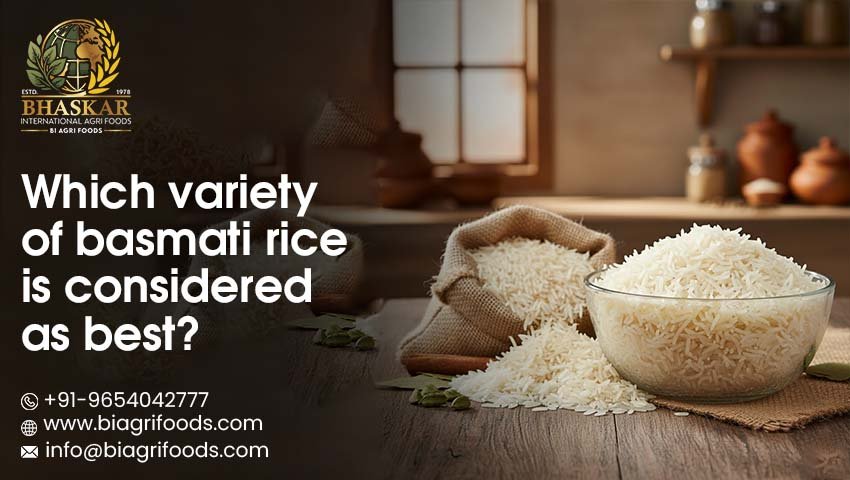
Which variety of basmati rice is considered best?
Basmati rice has earned a reputation for being aromatic, lovely and regal. Its long slender grains and the aromatic qualities appeal to everyone and are an important part of the cooking style and culture of Indian cuisines.
In this blog, we hope to profile the best types of basmati rice available, exploring their assorted characteristics while distinguishing flavor, aroma, and texture — and highlighting why Rice Exporter in India companies and leading Basmati Rice Exporters in India play a key role in bringing these premium varieties to global markets.
The Essence Behind Every Grain of Basmati Rice
Basmati rice is not just another rice - it is a heritage grain that is largely grown in Northern India. The word Basmati literally means "fragrant", and each grain embodies that with a sweet aroma and light consistency.
Basmati rice is not all the same; different varieties are available for different benefits. The type you select, will most likely depend on how it is used - whether it be for a weeknight meal, or a special export delicacy.
Popular Varieties of Basmati Rice
1. Traditional Basmati Rice – This is the long-standing type of Basmati, known for its long grain and alluring aroma.
2. 1121 Basmati Rice – Widely popular and highly sought after, these rice grains lengthen even more during cooking, and become increasingly popular worldwide with government regulated Basmati Rice Exporters in India.
3. Pusa Basmati Rice – This is a hybrid, and is higher yielding and provides excellent cooking qualities. It is considered very good processing and home rice.
4. 1401 Basmati Rice – provides a combination of aroma, fluffiness and the suitability for biryanis and special occasion dishes.
5. 1718 Basmati Rice – newer and high-quality strain of Basmati rice is exceptionally fragrant and elongates well when cooked.
Journey of Basmati Rice: From Field to Feast
| Stage | Process Name | Purpose |
| 1. Cultivation | Sowing and Growing | Looking for the long grains and rich aroma |
| 2. Harvesting | Grain Collection | Preserving the natural fragrance and a texture |
| 3. Milling | Husking & Polishing | To improve grain shine and export readiness |
| 4. Aging | Grain Maturation | Aging deepens aroma and the improves cooking quality |
| 5. Packaging & Export | Quality Check & Dispatch | To maintain freshness and purity during transport |
What Benefits have made India a Top Exporter of Basmati Rice
India is known throughout the world as the supplier of the finest Basmati. Rice Exporters in India rely on strict standards for the quality, purity, aroma and grain length.
- The ideal climate and highly productive soils of Punjab, HarBI Agri Foodyana and Uttar Pradesh produce some of the best fertile plains in India.
- The modern technology of milling and packaging retains the quality of the rice and its freshness.
- The high demand for authentic Indian rice means that Basmati Rice Exporter in India are the most dependable supplier in the world.
CONCLUSION
Among the countless types, 1121 Basmati Rice is often praised for its long grain, aroma and global acceptance. But "the best" rice is subjective to your palate and cooking application. India will always set the global standards for rice quality and aroma from regular home meals to fine dining or export meals.
For authenticity, reliability and world-class quality among Basmati Rice Exporters in India, BI Agri Foods is the name you can trust for the best grains that provide the true taste of India from the table of farmers to the table around the world.

